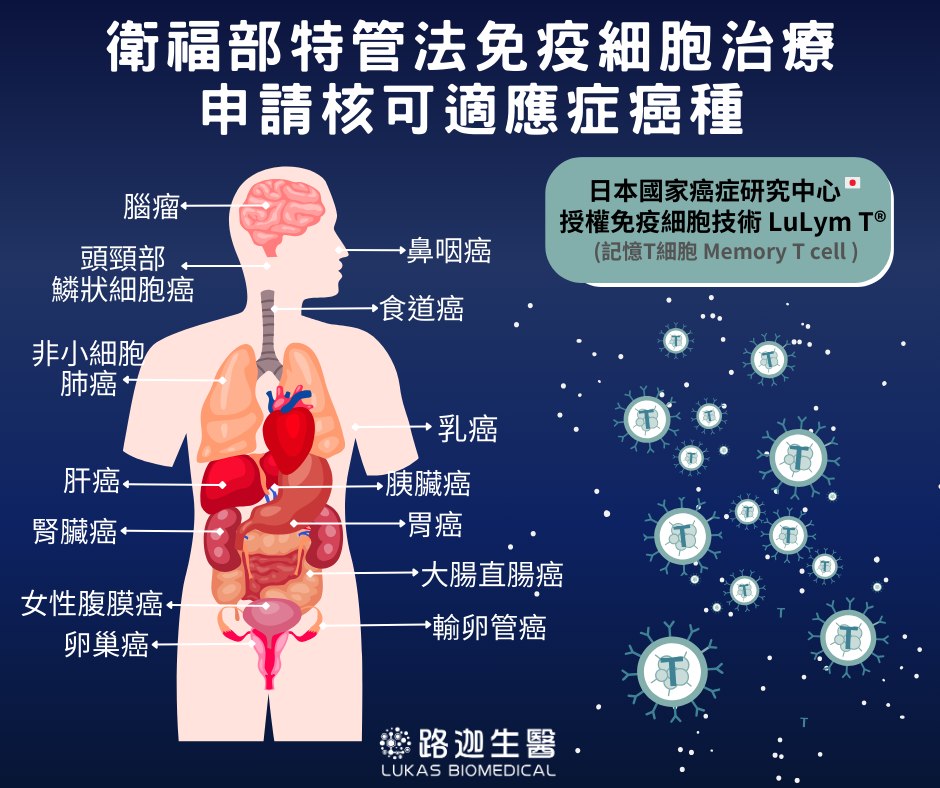About Immunocellular Therapy
Comparison between Immunocellular Therapy and Traditional Treatments
| Treatment Name | Cancer Treatment Methods and Principles | Common Side Effects |
|---|---|---|
| Surgical Therapy | Surgical procedures are used to remove tissues invaded by cancer cells, targeting only "local" areas of the body. Therefore, surgically removable cancer tumors are mostly in the early stages, not yet spread or metastasized. |
|
| Chemotherapy |
Drugs are administered through injection or oral intake to kill cancer cells or inhibit their growth. Chemotherapy is a "systemic" anti-cancer treatment that can be applied even if cancer cells have spread or metastasized.
During chemotherapy, patients may experience side effects such as general weakness, nausea, vomiting, diarrhea, and hair loss. |
|
| Radiation Therapy | Radiation is used to target cancerous areas, killing cancer cell tissues. It is suitable for early-stage cancers that have not yet spread or metastasized and is considered a "localized" cancer treatment. The treatment is more effective when the number of cancer cells is low. |
|
| Targeted Therapy | Targeted therapy aims at specific characteristics or mechanisms of cancer cells that lead to their growth and metastasis. There are two treatment methods: oral and injectable. This therapy can precisely disrupt the genes of cancer cells and effectively prevent their proliferation, differentiation, or metastasis. |
|
| Immunocellular Therapy |
Immune cells are activated and expanded ex vivo and then reinfused into the patient to detect and kill cancer cells.
|
|
Applications of immune cells
Immunocellular therapy: the fifth major cancer treatment method
Over time, chemotherapy or targeted drug treatments can lead to drug resistance in tumor cells, causing the tumors to grow again and affecting the treatment's effectiveness. Since immunocellular therapy uses the patient's own immune cells to fight cancer, it has fewer side effects, maintains the patient's quality of life, and is gradually becoming another treatment option for cancer patients.
Common Types of Immunocellular Therapy Applications
Each biotech company has its own immune cell culture techniques, each with its pros and cons. The table below lists the common immune cells and their advantages in cancer treatment:
| Cell Type | Memory T cells 👍 | Dendritic immune cells | Natural killer cells |
Cytokine-induced killer cells (CIK) |
DC-CIK
|
Gamma-Delta T cells
(γδT /GDT cells)
|
|---|---|---|---|---|---|---|
| Cell Culture Time | Short | Long | Short | Short | Long | Long |
| Invasiveness | ✖️ | ✔️ | ✖️ | ✖️ | ✖️ | ✖️ |
| Indications | Solid tumors | Solid tumors | Hematologic tumors | Solid tumors | Solid tumors | Solid tumors |
| Marketed drug | ✔️ | ✖️ | ✖️ | ✖️ | ✖️ | ✖️ |
| Self-proliferation ability | ✔️ | ✖️ | ✖️ | ✖️ | ✖️ | ✖️ |
| Specificity | High | High | Low | Low | Moderate | Moderate |
| Side effects | Low | Low | Low | Low | Low | Low |
| Characteristics |
With immune specificity and long-lasting duration, memory T cells can persist in the body. Memory T cells can be reactivated and target tumor cells after cancer relapsing, reducing the risks of recurrence. |
A cancer vaccine with high specificities can promote T cell activation after loading specific tumor antigens. | Innate immune cells lack specificity and are not limited by MHC. | A mixture of various types of immune cells can regulate each other and attack tumor cells collectively. |
Possesses both DC and CIK cells features. |
Contains the characteristics of both innate and adoptive immunity. Do not require APC dependent activation. |
| disadvantages |
Require sophisticated cell culture techniques. |
DC cells do not directly target and attack tumor cells. The tumor specific antigens are usually obtained through surgery, but if the tumor cells mutate, the antigen may no longer be effective. |
NK cells are effective against hematological neoplasms but not solid tumors. A large number of cells is need to enhance the therapeutic effects. |
Cell culture techniques, cell percentages (CD markers), and specificities vary between manufacturers. Cell survival period is short. |
Possesses the disadvantages of both DC and CIK cells. DC cells (WT1) do not require induction through solid tumor antigens, but the effectiveness is limited depending on the patient’s condition. |
GDT cells are difficult to culture, which comprise only 5% of the T cell population in health individuals and fewer in cancer patients. |
Applicable Cancer Types under the Administrative Regulation on Special Medical Instruments and Inspection Techniques

Brain tumor, head and neck cancer, head and neck squamous cell carcinoma, nasopharyngeal carcinoma, esophageal cancer, breast cancer, non-small cell lung cancer, liver cancer, stomach cancer, pancreatic cancer, kidney cancer, colorectal cancer, cervical cancer, ovarian cancer, female peritoneal cancer
-
Applications for using the therapy in other types of cancer are ongoing.
Eligibility
-
Those deemed suitable based on blood test evaluation
-
The final decision for treatment must be made by a professional physician

